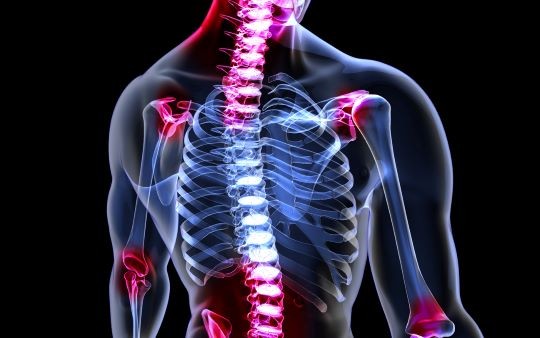Ultrasound Navigation System Could Improve Lumbar Puncture Accuracy
Images

Physicians often refer to lumbar punctures, also known as a spinal tap, as “blind bedside procedures” because they have to use their hands to feel the gap between two lumbar bones and then try to insert the needle in the right location. Finding the gap can be particularly challenging in people who are overweight or elderly.
“In some patients undergoing a lumbar puncture, the bony landmarks used to guide the needle aren’t easily felt, and in the elderly, there is degeneration of the spine making this procedure challenging,” explained Abhay Moghekar, MBBS, associate professor of neurology and director of the Johns Hopkins Hospital Cerebral Fluid Center.
“Multiple futile attempts can be painful for the patient and lead to a high likelihood of blood contamination of the cerebrospinal fluid, which could affect the interpretation of several diagnostic tests for life-threatening diagnoses like meningitis, encephalitis, or subarachnoid hemorrhage,” he said.
Moghekar and a team of researchers from Johns Hopkins University and Clear Guide Medical, Inc., a company specializing in imaging devices, developed a new ultrasound navigation system that could provide accurate, real-time, and intuitive needle insertion planning and guidance for lumbar puncture procedures. The results of their preclinical study were published in IEEE Transactions on Medical Robotics and Bionics.
The needle navigation system integrates three components that would allow a physician to insert the needle with increased accuracy: an ultrasound imaging scanner the size of a cell phone that could be attached to a patient’s skin along their lower spine, imaging algorithms that estimate bone surfaces, and augmented reality where a digital display to guide needle insertion is superimposed onto the view of the patient’s spine.
“This wearable ultrasound navigation system has several advantages over other imaging navigation methods. A pre-operative computed tomography scan would not be necessary, and clinicians would be able to use both hands to control the needle when using the navigation system. They currently use one hand to hold and guide the imaging probe and the other hand to insert the needle,” said Peter Kazanzides, PhD, a research professor in computer science at Johns Hopkins University and a co-corresponding author of the paper.
In the current study, the researchers first evaluated the overall accuracy of the navigation system comparing two forms of augmented reality (a tablet with a camera-based tracking or a head-mounted display similar to wrap-around goggles, worn by the physician, with optical-based tracking).
Both types of augmented reality accurately guided the needle placement to its target. The overall needle navigation accuracy was 2.83mm for the tablet method and 2.76mm for the head-mounted display method. The results fell within the 4mm benchmark used in spinal surgery for accurate needle placement.
The researchers then conducted a preliminary user study to compare the two augmented reality navigation systems and obtain feedback. A total of 16 users completed eight sets of lumbar puncture procedures using a realistic anatomical model (phantom) of the spine.
The users were successful 89% of the time at first-time needle insertions in the lumbar phantoms. Users could reach the targets with an average of 1.14 and 1.12 needle insertion attempts using the head-mounted display and tablet navigation systems, respectively. A successful puncture insertion was defined in the current study as when the needle tip reached the target location, in this case, a rubber tube embedded in the phantom vertebrae canal.
By comparison, other studies of patients have shown that the traditional palpation method of needle insertion can require multiple needle insertion attempts. One study showed that while first-time needle insertion was successful in 71% of patients, nearly 30% of patients required multiple insertion attempts or the insertion failed.
In addition, the users preferred the ease of the Clear Guide Medical tablet-based navigation system over the head-mounted display.
A limitation of the preliminary study was that most users were unfamiliar with using ultrasound imaging or augmented reality applications and only one physician was included. However, the researchers plan to test the system with clinicians in the next phase.